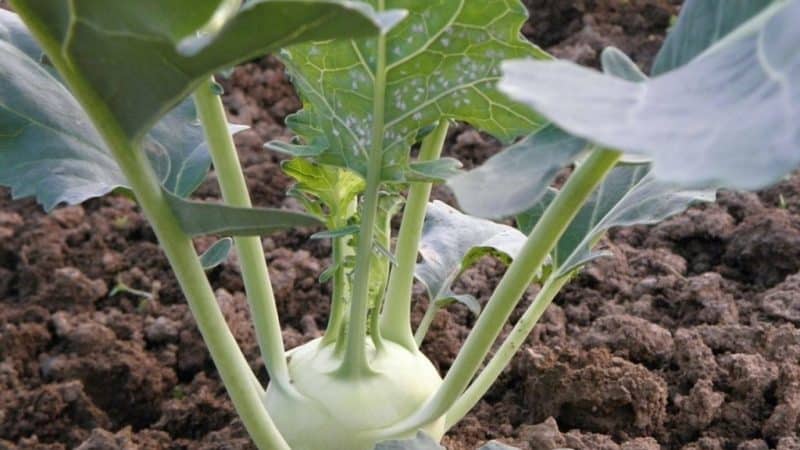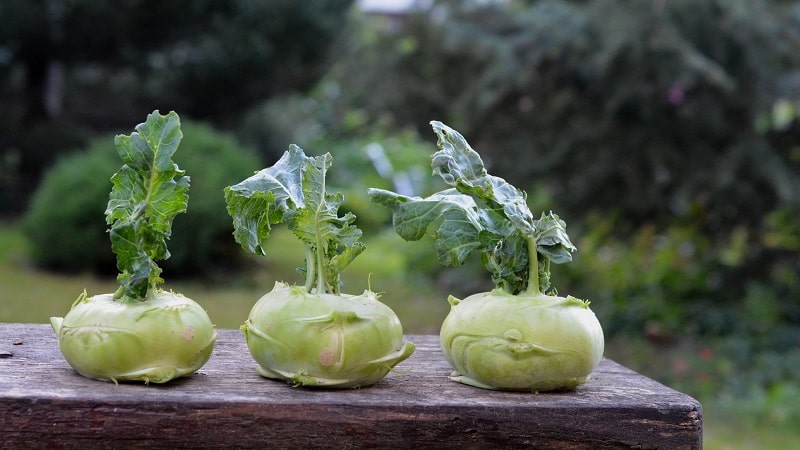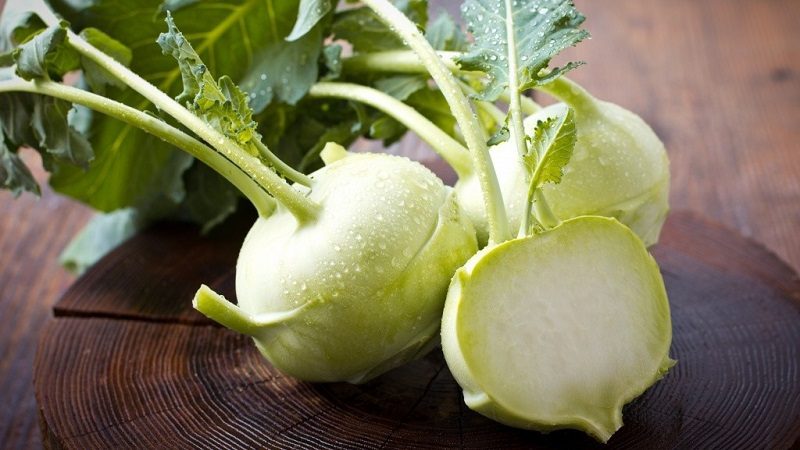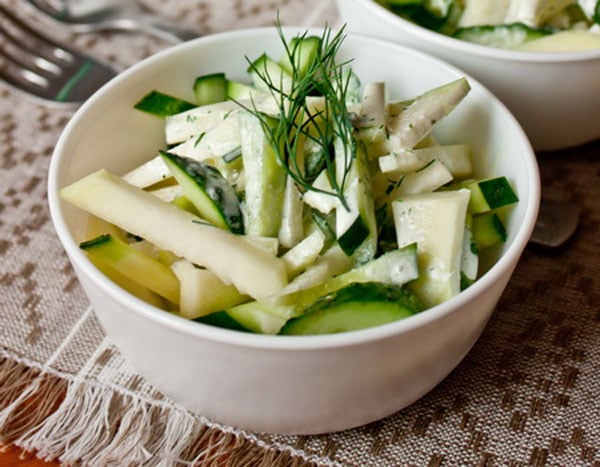Useful properties and contraindications of kohlrabi cabbage
Kohlrabi cabbage is a type of crop that produces not a head of cabbage or inflorescences, but a spherical stem fruit resembling a turnip. Most of all, the vegetable appealed to the inhabitants of Europe: there they prepare dozens of simple and intricate dishes from it. It is a highly nutritious product containing many minerals and vitamins.
Calorie content of kohlrabi

Taste kohlrabi juicy, moderately sweet, without bitterness or spiciness. 100 g contains 30–40 kcal.
Nutritional value per 100 g:
- water - 80 g;
- carbohydrates - 7.6 g;
- proteins - 2.5 g;
- dietary fiber - 1.7 g;
- ash - 1.2 g;
- fats - 0.1 g.
Chemical composition of cabbage:
- vitamins: A, E, C, B, B2, B9, PP;
- macro- and microelements: potassium, phosphorus, sodium, magnesium, iron, manganese, selenium, sulfur, copper, cobalt, iodine, zinc;
- antioxidants, digestive enzymes.
Despite its low calorie content, the vegetable quickly creates a feeling of fullness.
Useful properties of kohlrabi cabbage
This nutritious vegetable will help replenish your strength if you are deficient in vitamins or during the cold season.
What is good for the body

Frequent consumption of kohlrabi helps improve metabolism and the functioning of internal organs. This is especially true for the digestive system. Potassium is involved in fluid excretion, fiber improves intestinal motility.
Reference. It is recommended to include cabbage in the diet of pregnant women, but when breastfeeding it is better to avoid it so as not to provoke colic in the baby.
Children are given vegetables after six months of life, but in very small portions and in processed form.
Kohlrabi contains a small amount of the amino acid arginine, which reduces blood pressure and improves aerobic and anaerobic performance in sports. Due to its low calorie content, cabbage is used in dietetics.
Medicinal properties
There haven't been enough studies on the benefits of kohlrabi, and those that exist have looked at the effects on mice and rats. Cabbage may be beneficial as an antidiabetic, antioxidant, and anti-inflammatory agent. Moreover, red varieties of vegetables exhibit these properties more strongly than green ones.
As a type of cabbage, kohlrabi improves intestinal motility, is effective in treating constipation, has a mild diuretic effect and prevents swelling.
Contraindications and possible harm to health
The following diseases are contraindications to consuming kohlrabi cabbage:
- acute pancreatitis;
- increased stomach acidity;
- peptic ulcer;
- hyperacid gastritis;
- individual intolerance to the product;
- chronic hypotension.
To reduce the concentration of nitrates, which can be used when growing crops, cabbage is soaked in cold salted water.
How to eat kohlrabi

Cabbage is eaten fresh, boiled, baked, steamed and grilled, fermented and marinate, from it they make filling for pies. The vegetable goes well with meat, shrimp, carrots, tomatoes and even fruits.
Recipe for stewed kohlrabi in sour cream and tomatoes
You will need:
- kohlrabi - 300 g;
- tomatoes - 200 g;
- sour cream - 60 g;
- flour - 10 g;
- butter - 30 g;
- salt - to taste;
- greens for decoration.
Preparation:
- Peel the cabbage, wash and cut into small cubes.
- Heat butter in a saucepan, add kohlrabi and 3 tbsp. l. water.Simmer covered for 20 minutes until tender, add salt at the end.
- Mix flour with sour cream, pour into a saucepan with cabbage, stir and simmer for another 10 minutes.
- Cut the tomatoes into thin slices and fry in oil for 5–10 minutes.
- Place kohlrabi on a wide dish. Top with tomatoes and chopped herbs.
Fresh salad with celery

Ingredients:
- kohlrabi - 300 g;
- cucumber - 100 g;
- stalk celery - 100 g;
- half a lemon or lime;
- olive oil - 1 tbsp. l.;
- sesame - 1 tsp;
- salt, pepper - to taste;
- greens for decoration.
Preparation:
- Peel the kohlrabi and grate on a coarse grater.
- Cut the celery into thin pieces.
- Grate the cucumber and squeeze out the juice or cut into small cubes.
- Chop any greens.
- Mix all ingredients in a large bowl, add salt and pepper, season with oil and squeeze out citrus juice.
Before serving, sprinkle with sesame seeds and replace with pumpkin seeds if desired.
Uses of kohlrabi leaves
The leaves of kohlrabi are edible, as is the stem. They contain less sugars but more vitamin C.
To prepare stewed leaves you will need:
- leaves - 500 g;
- medium onion - 1 pc.;
- cream - 100 ml;
- vegetable oil - 30 ml;
- salt, pepper, nutmeg - to taste.
Preparation:
- Finely chop the onion and fry in oil.
- Cut the cabbage leaves into thin long pieces and mix with the onion. Simmer for 7–10 minutes.
- Pour in the cream, add salt and spices. Simmer covered for another 8 minutes.
Stewed kohlrabi leaves are combined with fried meat, chicken, and pork chops.
This is interesting:
Diet for weight loss using Chinese cabbage: principles, approximate diet, reviews and results
Conclusion
Nutritious kohlrabi diversifies the standard diet. It is added to fresh salads, side dishes, and used as an independent dish. The vegetable contains sugars, vitamins and minerals, and due to its low calorie content it can be included in the diet menu.